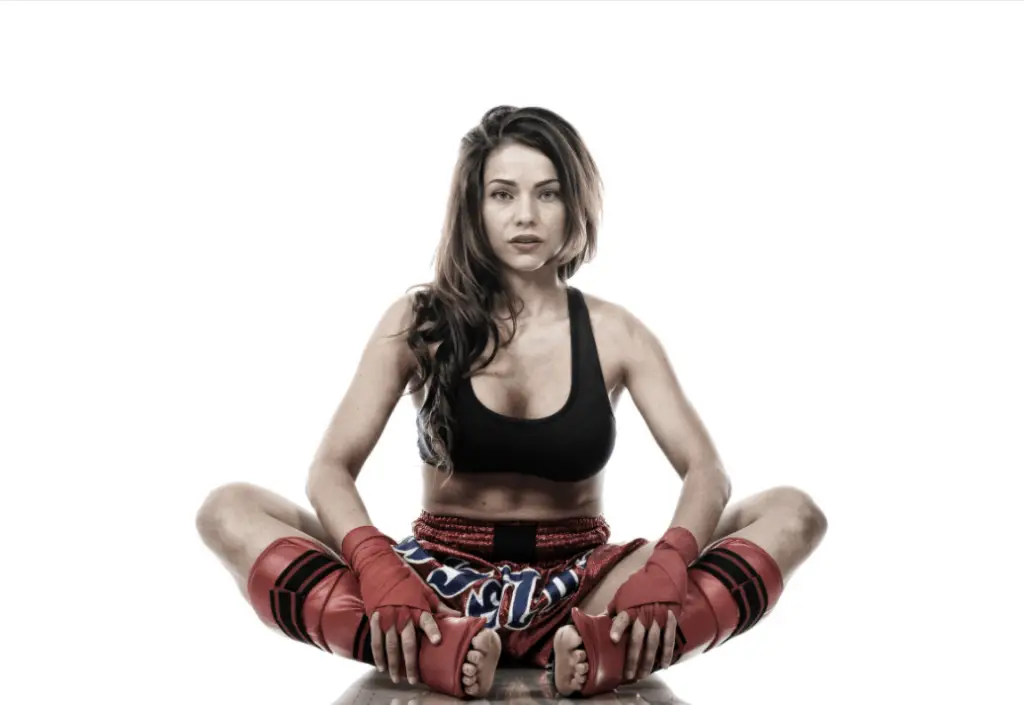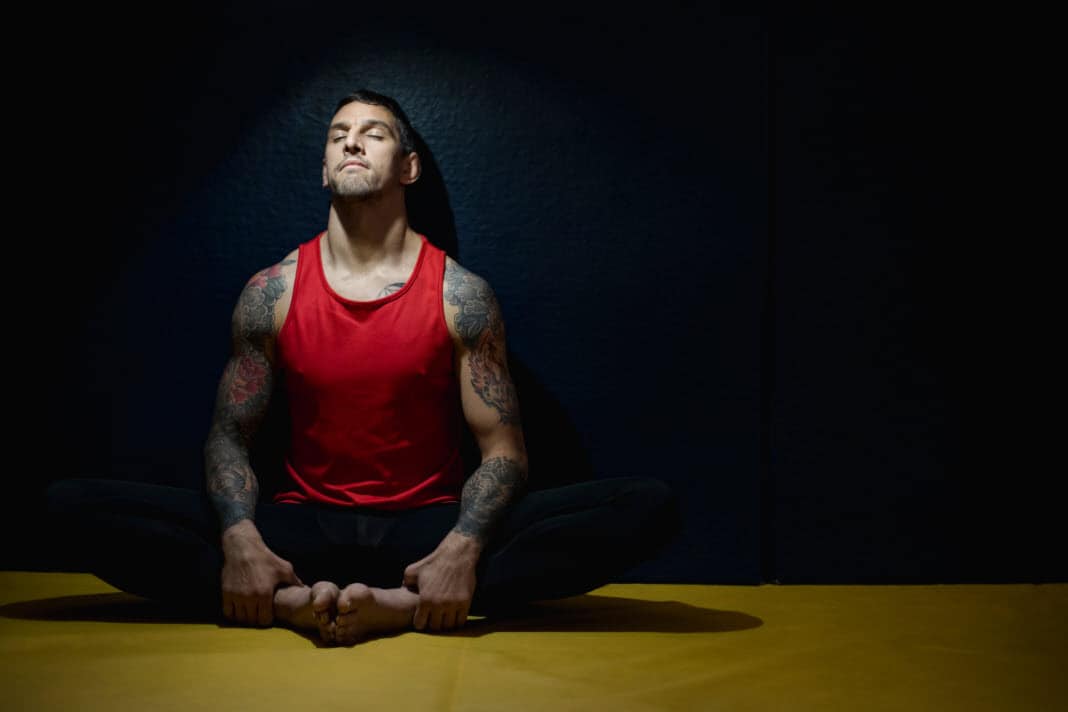At the intersection of the new age movement and the fitness craze, yoga has found a unique place where those interested in relaxation and the serious athletes looking to take care of their bodies are equally interested in what is an exercise as much as it is an art form. Many practitioners of Brazillian Jiu-Jitsu (BJJ), for instance, do yoga regularly. However, is yoga good for BJJ?
Yoga is a great way to increase flexibility for grapplers and should be given more consideration than it often receives. It forces you into difficult positions, which builds muscle endurance as well as balance. I recommend yoga and find that most BJJ practitioners have a limited range of movement due to this type of exercise
In this article, we will cover the benefits of yoga concerning BJJ in detail. You will also learn about yoga’s common myths and the top five postures to help you improve your BJJ performance.
Table of Contents
Benefits of Yoga for BJJ
It Helps You Become Flexible
Yoga has many supposed benefits, and the chief of these is the flexibility it lends to the practitioner. By holding eccentric poses, the yoga practitioner pushes his body to get more comfortable in odd situations.
Certain minor muscles don’t get worked out in everyday life, and hence the body remains relatively rigid. Once you start working out major muscle groups, these minor tendons and muscles are left untrained. As a result, athletes become even more rigid than the average person.
Yoga postures are specifically designed to put a strain on the muscles and tendons that help us stretch. By exercising these muscles, you become more flexible. What that means for your BJJ matches is that you will find yourself slipping out of certain holds and even reversing other holds only because you have expanded your potential to get into odd positions.
It Helps You Develop Balance
In BJJ, it is crucial that you choose when to get on the floor. If you are hitting the floor because your opponent is taking you there, regardless of your ground game, you are likely at a disadvantage. On the other hand, if you can balance yourself and avoid being taken down, you can tire out the opponent and take them down while you have the advantage.
In this, yoga is helpful because it helps you cultivate balance. Balance becomes somewhat of a sweeping defense against BJJ, and if you master it with footwork yoga poses, you are likely to take less damage even from an opponent who has superior grappling skills.
It Builds Your Tolerance for Pain
There are different kinds of pain in martial arts, but with BJJ, the most painful positions are where your muscles are stretched in unconventional ways because you have been caught in a submission hold. Provided that you rely on a specific set of postures, your Yoga regimen can be like preparing for painful holds.
By slowly strengthening your minor muscles and tendons, you increase your body’s capacity to bend in unconventional ways. When you find yourself in a tough hold, you will not exactly feel at home, but you will have less of an urge to tap out immediately.
Common Myths About Yoga

Since the exercise genre became popularized by the new age movement, there are significant wrong connotations and false myths associated with yoga. Below are some of the myths that may misinform you regarding the subject.
You Should Be Skinny or Flexible to Perform Yoga
With the representation of yoga in popular culture, the skinny yoga mom’s image became synonymous with yoga in general. However, you can practice yoga regardless of your body composition, and as for flexibility, it is worth noting that one’s flexibility is the result of yoga, not a prerequisite.
Yoga Is Dangerous
As the saying goes, ‘if it bleeds, it leads’ our news cycle is obsessed with negative stories and cautionary tales. As a result of this bias, the few instances where some individuals pushed their yogic postures too far have gained much more news coverage than is fair.
Of course, pushing your body beyond its limits has its risks, the notion that yoga is more dangerous than sparring is laughable. Keeping your safety as a priority is key for BJJ, whilst striking isn’t part of the rules, accidental head clashes can cause teeth to be knocked out – so always keep a mouthguard handy.
Yoga Does Not Count As Working Out
This myth may have a grain of truth to it. Yoga cannot replace your regular workout because it targets a set of muscles and tendons that are entirely separate from the major muscle groups stimulated by regular exercises like pull-ups, push-ups, and punching the bag.
However, that does not mean yoga is not a workout. With its ability to build endurance, provide resistance training, and improve fitness, yoga can be rightfully considered a workout.
If you choose to partake in hot yoga – the average 200lb man can burn up to 800 calories in an intense hot yoga session. You’ll be sore the next day so be sure to increase your water and protein intake! Whilst you’re probably not doing hot yoga in your gi, it will get just as wet from the sweat – make sure you know how to wash your gi and belt properly to avoid shrinkage and smell.
Top 5 Yoga Postures for BJJ
Practitioners of Brazilian Jiu-Jitsu are known to be passionate about the art form and find it therapeutic. Because of this, they apply themselves and push the limits of what is possible on the mat. Below are the top five yoga postures that will improve your BJJ performance.
If you have a vibrating foam roller, make sure to incorporate it in the exercises below to improve your results further.
The Cobra Pose
Because most of the BJJ action happens towards the front, the forward focus can produce a natural slump or a hunched over posture among the practitioners. By adopting the cobra pose, which forces one to arch backward, the effects of long sparring sessions can be neutralized. Make it a habit to hold the cobra pose after your sparring sessions.
The Pigeon Pose
Most yoga practitioners place emphasis on the hips, and the pigeon pose helps work the inner thigh and the hips. For a grappler, this pose helps train the high guard. This exercise helps you be in a better position by helping improve external rotation of hips and use your legs during combat.
The Plough Pose
While not really the icon of yoga, this is a great exercise that impacts one’s shoulders, upper back, and spine. For a practitioner of BJJ, the plough pose helps train the open guard. By being on your back in this position, you build comfort with putting weight on an increasingly smaller area, which happens with advanced guards when you control a larger opponent with your legs.
Therefore, the plough pose keeps you sufficiently trained when your guard retention involves taking more pressure on your upper back.
Two Knee Spinal Twist
BJJ sparring sessions test the flexibility of your muscles to a large extent. If you do not have the time to stretch each muscle individually, you have to rely on poses like the two-knee spinal twist.
By using this pose before your training session, you will enter the session with your hips stretched, back relaxed, and your shoulders and chest sufficiently prepared for the wear and tear of the upcoming session.
The Downward Facing Dog
If you have even a passing interest in yoga, you may already be familiar with this pose because it is iconic. It is so prominent because it has general benefits, including but not limited to working the calves, flexing the hamstrings, stretching one’s shoulder, and their upper back while simultaneously stressing the arm.
Many of these benefits directly translate to the BJJ mat. Your hamstrings, calves, and back collectively help with your guards while the arm endurance helps with the holds. Aside from that, the pose helps you release stress post-sparring.
Final Thoughts – Is Yoga Good for BJJ?
Though you may not think of bulky athletes as consummate yogis, the stretch-based exercise form has benefits for your BJJ practice. With certain poses, you will improve your guard while others will help you build the flexibility to get out of odd holds.
There are many myths associated with the art form because it became synonymous with the new age movement. As a BJJ enthusiast, you look through the misinformation and adopt the right yoga exercises to improve your performance on the mat.
If you’re doing yoga and BJJ at the same gym – you’ll want to make sure you have a bag that can handle all that gear – your gi, wet clothes, valuables etc. We’ve reviewed the best training bags for combat sports – and there’s a clear winner.



 (5 Best Postures To Improve Your Game)
(5 Best Postures To Improve Your Game) (4 Pull-Ups Variations You Didn’t Know)
(4 Pull-Ups Variations You Didn’t Know)